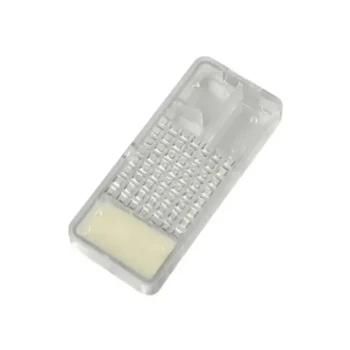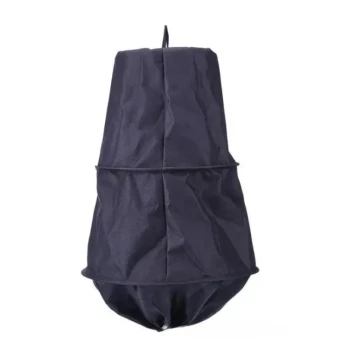The window for creating double nucleus (nuc) colonies is highly specific and strategically timed. Beekeepers typically create double nucs starting in mid-May and ending in late July. This period is chosen to align with peak resource availability and to ensure the new colonies have enough time to build up their populations and stores before winter arrives.
The timing for creating double nucs isn't arbitrary; it's a strategic calculation based on peak colony strength, optimal queen mating conditions, and the critical need for the new colony to establish itself before the first frost.
The Strategic Rationale Behind the Timing
Understanding why this mid-May to late-July window is so critical is key to successfully creating new, viable colonies. The timing is dictated by the natural cycles of the honey bee colony.
Aligning with Peak Colony Strength
Double nucs are created by taking frames of brood, bees, and resources from strong, established "donor" hives. This process can only begin after the parent colonies have completed their spring buildup and have resources to spare.
Mid-May is typically when hives in many temperate climates reach this peak, making it the ideal starting point.
Capitalizing on Optimal Mating Conditions
For a new nuc to thrive, it needs a productive, well-mated queen. The period from late spring to mid-summer offers the best conditions for this.
Warm, stable weather is essential for a virgin queen's mating flights, and the drone (male bee) population is at its peak, increasing the odds of successful mating.
The Race Against the Calendar
The late-July cutoff is arguably the most critical factor. A colony needs several months to grow.
The bees must draw out new comb, the queen must lay thousands of eggs to build a winter workforce, and the workers must gather enough nectar and pollen to survive the cold months. Starting a nuc any later than July dramatically reduces its chances of surviving its first winter.
Understanding the Shift in Queen Strategy
The method for introducing a queen changes as the season progresses, reflecting the urgency of the calendar.
Why Start with Queen Cells?
For the first part of the season (roughly May and June), beekeepers often use queen cells. This is an efficient way to produce many queens when conditions are ideal for mating.
The colony has ample time for the virgin queen to emerge from her cell, mature, mate, and begin laying.
Why Finish with Mated Queens?
In the final two to three weeks of the nuc-making season (July), the strategy shifts to using mated queens. A mated queen will begin laying eggs almost immediately.
This gives the late-season nuc a crucial head start on brood production. Waiting for a queen cell to emerge and mate would waste precious weeks the colony needs to prepare for fall.
Understanding the Trade-offs
Timing is a balance, and getting it wrong has significant consequences. Pushing the boundaries of the established season introduces serious risks.
The Risk of Starting Too Early
Creating nucs before mid-May can severely weaken the parent colonies. It compromises their ability to build up for the main summer honey flow, reducing your potential honey harvest.
Furthermore, early spring weather is often volatile, which can lead to chilled brood or failed queen mating flights.
The Danger of Starting Too Late
This is the most common mistake and the most severe. A nuc created in August or later simply does not have the time to complete the critical tasks needed for survival.
The colony will be too small, have insufficient food stores, and will not have raised the "winter bees" needed to maintain the cluster through the cold. These colonies almost always perish.
Making the Right Choice for Your Goal
Your approach should be guided by the calendar and the state of your specific colonies.
- If your primary focus is maximizing nuc production: Begin in mid-to-late May, once your donor hives are strong, and use queen cells to leverage the optimal mating conditions of early summer.
- If you are getting a late start (early to mid-July): You must use a mated queen. This accelerates brood rearing and is the only realistic chance the colony has to prepare for winter in time.
- If you miss the late-July cutoff: It is better to wait until next year. Creating a colony doomed to fail is a waste of bees, resources, and effort.
Ultimately, successful double nuc creation hinges on respecting the seasonal clock of the honey bee.
Summary Table:
| Timing Phase | Key Action | Primary Goal |
|---|---|---|
| Mid-May to June | Start with Queen Cells | Leverage optimal mating conditions for maximum nuc production. |
| July | Shift to Mated Queens | Accelerate brood production for late-season colonies. |
| Late-July | Cutoff Date | Ensure colonies have enough time to build up for winter survival. |
Build Stronger Colonies with the Right Equipment
Timing is critical for successful nuc creation, but so is having reliable, high-quality equipment. Whether you're a commercial apiary scaling up or a distributor supplying beekeepers, HONESTBEE provides the durable beekeeping supplies and nucleus boxes you need to support your operations.
Let us help you equip your hives for success. Contact our wholesale team today to discuss your needs and get a quote.
Related Products
- 5 Frame Wooden Nuc Box for Beekeeping
- Twin Queen Styrofoam Honey Bee Nucs Mating and Breeding Box
- Automatic Heat Preservation 6 Frame Pro Nuc Box for Honey Bee Queen Mating
- Plastic Transporting Bee Packages and Nuc Boxes for Beekeeping
- Styrofoam Mini Mating Nuc Box with Frames Feeder Styrofoam Bee Hives 3 Frame Nuc Box
People Also Ask
- What is the optimal time to transfer frames from a nucleus hive? Ensure a Successful Hive Transfer
- How should you store a nucleus hive before installation? Ensure a Smooth Transition for Your Colony
- When is the best time to move a new nuc of bees to a full-sized hive? Ensure a Low-Stress, Successful Transfer
- What is the advantage of using a nucleus to hive a swarm or cast? Boost Swarm Success with a Nuc Box
- How does installing a nuc differ from installing a bee package? A Guide to Starting Your Hive Right



















